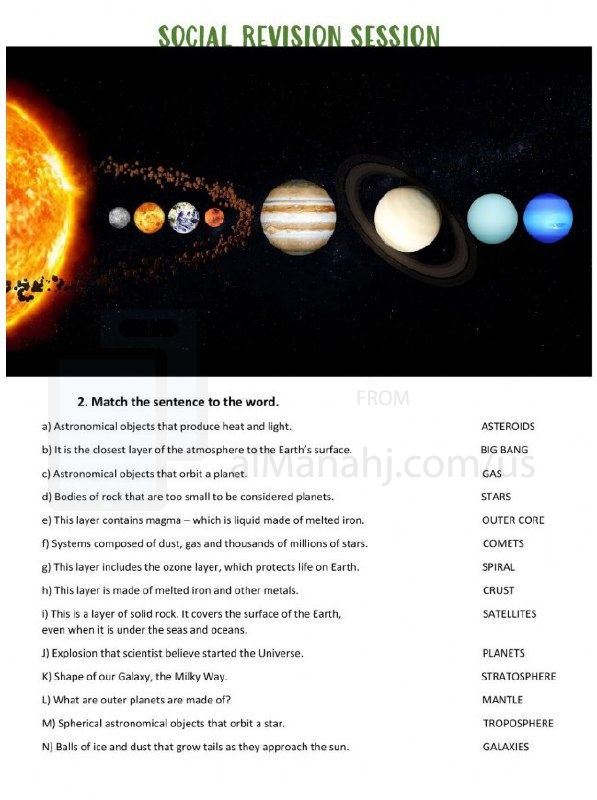| You are here: Almanahj Website ⇒ American curriculum ⇒ 8th Grade ⇒ Geology ⇒ Term 1 | ||
|---|---|---|
Worksheet about Representing the Earth | ||
|---|---|---|
| Subject: Geology | ||
| 8th Grade | ||
| Term 1 | ||
| Year: 2023/2024 | ||
| Size: 506.8KB | ||
| Number of clicks: 106 | ||
| Publish date:November 29, 2023 | ||
| Added by: Eman | ||
| Last download date: 2024-09-03 19:04:33 | By: theodor GemaDG | |
| File info: Representing the Earth can be done in various ways, depending on the context and purpose. Here are a few common methods of representing the Earth: 1. Globes: A globe is a spherical representation of the Earth. It provides a three-dimensional model of the planet, accurately depicting its shape, landmasses, and bodies of water. Globes are often used in educational settings, museums, and for general geographic reference. 2. Maps: Maps are two-dimensional representations of the Earth's surface. They can be created using various projections, which are mathematical methods to flatten the curved Earth onto a flat surface. Maps can show different aspects of the Earth, such as political boundaries, topography, climate, vegetation, or specific thematic information. They are widely used for navigation, planning, and visualizing geographic data. 3. Satellite Imagery: Satellite imagery provides a view of the Earth's surface captured by satellites orbiting the planet. These images can show a range of features, including landforms, bodies of water, vegetation, and human settlements. Satellite imagery is widely used in fields such as environmental monitoring, urban planning, and disaster management. 4. Computer Models: Computer models use advanced software and data to simulate and represent Earth's features and processes. These models can represent various aspects, such as climate patterns, ocean currents, geological processes, or ecosystems. They are valuable tools for scientific research, predicting future changes, and understanding complex Earth systems. 5. Virtual Reality (VR) and Augmented Reality (AR): VR and AR technologies provide immersive and interactive ways to represent the Earth. Virtual reality allows users to explore virtual environments that simulate real-world locations, while augmented reality overlays digital information onto the user's view of the real world. These technologies can be used to offer interactive educational experiences, simulate geographic scenarios, or visualize data overlays on real-world landscapes. 6. Artistic Representations: Artists often create visual representations of the Earth in various forms, such as paintings, sculptures, or mixed media artworks. These representations may be realistic or interpretive, capturing the beauty, diversity, and interconnectedness of the planet. It's important to note that all representations of the Earth involve some level of simplification, as capturing the complexity of our planet in its entirety is a challenging task. The choice of representation depends on the specific purpose and the information being conveyed. | ||
| Downloading link Worksheet about Representing the Earth |
|---|
|
1701247695.pdf
The file is being prepared for download
|
| File images |
|---|
 |